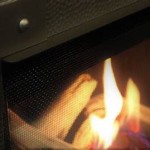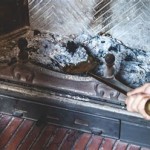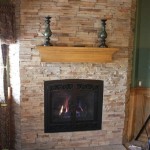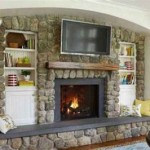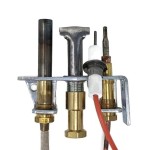Can You Convert A One Sided Fireplace To Two?
The desire to enhance the ambiance and heating efficiency of a fireplace often leads homeowners to consider modifications. One such modification is converting a one-sided fireplace into a two-sided, or see-through, fireplace. This transformation can dramatically alter the aesthetics of a room, potentially connecting two separate spaces visually and thermally. However, the feasibility and complexity of this project depend on several factors, including the existing fireplace structure, local building codes, and available resources.
A one-sided fireplace, as the name suggests, has a single opening through which the fire is viewed. The back of the fireplace is typically a solid wall, preventing heat and light from radiating in that direction. In contrast, a two-sided fireplace has openings on opposite sides, allowing for the fire to be viewed from two different rooms or areas. This design can create a focal point visible from multiple locations and potentially improve the distribution of heat.
Converting a one-sided fireplace to a two-sided one is not a simple undertaking. It requires careful planning, structural assessment, and adherence to safety regulations. Ignoring these crucial aspects can lead to structural instability, fire hazards, and code violations. Therefore, a thorough understanding of the process and its implications is essential before proceeding.
Structural Considerations and Feasibility
The primary obstacle in converting a one-sided fireplace to a two-sided model lies in the structural integrity of the existing fireplace. The fireplace is not simply a decorative element; it’s an integrated part of the building’s structure, often contributing to the stability of the chimney and surrounding walls. Creating a second opening requires removing a portion of this load-bearing structure, which can compromise its integrity. Before any demolition begins, a qualified structural engineer must assess the fireplace and chimney system. This assessment will determine if the existing structure can withstand the proposed modification or if additional support, such as steel beams or columns, is necessary.
The engineer will analyze the construction materials used, the dimensions of the fireplace, the design of the chimney, and the overall load distribution. They can then provide recommendations for reinforcing the structure and ensuring its stability. Ignoring this step can have dire consequences, including structural failure and potential collapse.
Furthermore, the assessment will determine the type of fireplace currently in place. Is it a masonry fireplace, built from bricks or stones, or a prefabricated metal fireplace? Converting a masonry fireplace is generally more complex and costly than converting a prefabricated one because it involves significant demolition and reconstruction. Prefabricated fireplaces may be easier to modify but still require careful evaluation to ensure compatibility with the desired two-sided design.
Gas fireplaces present additional complexities. Gas lines and control valves must be rerouted or modified to accommodate the new configuration. This work must be performed by a licensed gas fitter to ensure safe and compliant installation.
Safety and Building Codes
Fireplaces, by their nature, pose inherent safety risks. Ensuring compliance with local building codes and safety regulations is paramount when undertaking a conversion project. These codes are designed to minimize the risk of fire, carbon monoxide poisoning, and other hazards. Building codes often specify requirements for fire-resistant materials, clearances around combustible materials, chimney height and construction, and ventilation. Ignoring these requirements can result in costly fines and, more importantly, jeopardize the safety of the occupants.
Obtaining the necessary permits is a critical step in the conversion process. Permits ensure that the project is reviewed and approved by local authorities, verifying that it meets all applicable codes and regulations. The permit application typically requires detailed plans and specifications for the proposed modifications, as well as documentation from qualified professionals, such as structural engineers and licensed contractors. Failing to obtain the required permits can result in the project being shut down and potentially requiring the fireplace to be restored to its original state.
Furthermore, consider the placement of combustible materials near the fireplace opening. Two-sided fireplaces present a unique challenge in this regard, as they expose two separate areas to the potential risk of sparks or embers. Maintaining adequate clearances around both openings is crucial to prevent accidental fires. The specific clearance requirements vary depending on the type of fireplace and the materials used in the surrounding construction, but generally, non-combustible materials should be used within a certain radius of the opening.
Cost and Practical Considerations
The cost of converting a one-sided fireplace to a two-sided fireplace can vary widely depending on the complexity of the project, the materials used, and the labor rates in the area. It's important to obtain multiple quotes from qualified contractors to get a realistic estimate of the total cost. Factors that can influence the cost include the extent of structural modifications required, the type of fireplace (masonry or prefabricated), the need for new venting or gas lines, and the finish materials used around the opening. For example, the cost of reinforcing the existing structure with steel beams can significantly increase the overall budget.
Beyond the financial cost, consider the practical implications of the conversion. Constructing a two-sided fireplace often involves significant demolition, which can create dust and debris throughout the home. Proper dust control measures, such as sealing off the work area and using air filtration systems, are essential to minimize disruption. Also, consider the potential impact on adjacent rooms. Creating a two-sided fireplace may require altering the layout or decor of both rooms to accommodate the new focal point.
Maintenance is another factor to consider. Two-sided fireplaces require regular cleaning and inspection to ensure proper functioning and prevent the buildup of creosote or other debris. The chimney must be swept regularly, and the firebox should be inspected for cracks or damage. Additionally, the ventilation system must be properly maintained to ensure adequate airflow and prevent the buildup of carbon monoxide.
See Through Double Sided Fireplaces Heat Glo
See Through Double Sided Fireplaces Heat Glo
Converting A Wood Burning Fireplace Into Gas Heat Glo
Corner Two Sided Gas Fireplace Heat Glo

I Built A Fireplace Easier Than Thought

Double Sided Indoor Outdoor Fireplace Heat Glo

Double Sided Indoor Outdoor Fireplace Heat Glo

How To Modernize And Update A Gas Fireplace We Love Fire

Hearth Home Technologies Double Sided Gas Fireplace Fireside

Stellar Transcend Indoor Outdoor Double Sided Gas Fireplace Fireside Hearth Home

